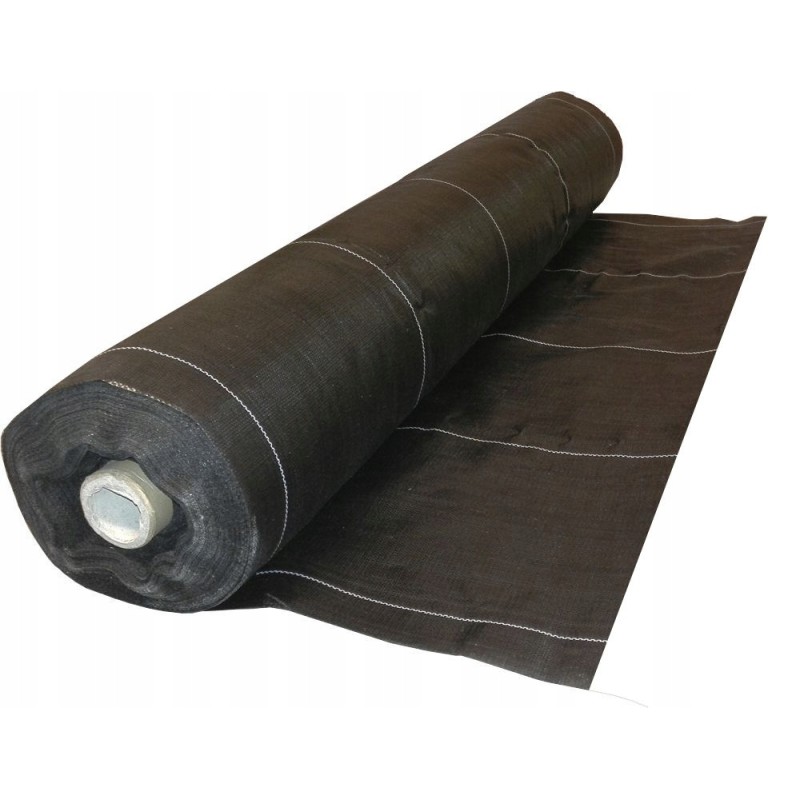Agrotextile mulching for weeds uv p-100 3.2x100m blacksymbol: wig t3-2x100-94
agrotextile mulching black uv p-100 3.2x100specification:width: 3.2m
length: 100mb
weight: 100g/m2
colour: black
uv stabilization
country of origin: Poland
characteristics:mulching agrotextiles are made of polypropylene with a characteristic fiber weave. agrotextile (also commonly known as mulching mat or nursery mat) is an excellent mulching material for anyone who wants to increase the quality and growth rate of their crops. it is widely used in agriculture and horticulture, mainly for mulching soil. ideal for slopes, rockeries, under gravel and grit, which will not damage the material. its unique properties provide ideal conditions for plant growth. agrotextile protects plants from pathogens, ensuring proper phytosanitary conditions. agrotextile available in various colors and weights. and the higher the weight of the agrotextile, the more durable the material will be, which significantly translates into a longer service life. thanks to the use of agrotextile, we can be sure that the material provides plants with the best conditions for development.
use of mulching agrotextile: for weed suppression in gardening, horticulture, horticulture
we use it in the garden to mulch plants, trees, ornamental shrubs or flowers
protects plants from soil pests
in the establishment of gardens and green areas
synthetic materials such as nursery mats were initially used mainly by professionals, but nowadays mulching the soil with synthetic material is a common practice. thanks to its thickness, the period of use in optimal conditions is about 5 to 7 years in open spaces.
suppresses weed growth. with longer use, the fabric prevents weed growth, and therefore, it is possible to limit the use of herbicides (or even eliminate them completely). thanks to this, fruits and vegetables contain fewer harmful chemicals. the fabric creates good conditions for plants.
resistant to uv rays. it is resistant to uv rays. thanks to this, it is more durable and does not need to be replaced often.
permeable to water. despite its resistance and thickness, it is permeable. plants will be supplied with water. there will also be no problems with fertilization. thanks to its construction, the agrotextile does not significantly inhibit the penetration of fertilizers into the soil (like thick layers of bark). fertilizers scattered on the surface of the agrotextile move through it after dissolving in the drops of the first rain.
breathable. the agrotextile allows air to pass through, does not hinder the growth of plants. only inhibits the growth of weeds that are directly underneath it.
additional use of agrotextile:
water ponds: protects foil and geomembranes used in the construction of ponds, water pools and green roofs from mechanical damage. prevents stones and roots from breaking through the insulating foil.
road construction: strengthens roads, paths, driveways, parking lots, terraces and playing fields, as a separation layer it creates a barrier and separates clay, dusty, etc. subsoil from the structural layers of the surface. replacing the subsoil becomes unnecessary (saving aggregate). reduces the formation of ruts.
vertical drainage, drainage pipes: protects the vertical foundation foil from clogging with soil. drains water, and the basement walls remain dry. protects drainage systems from silting up.
installation of agrotextileit is important to properly install the agrotextile. the surface under the mat should be cleaned, removing all weeds and stones. it is good that the area is level. after the mat is laid, you can plant plants. you can use scissors to make holes in the fabric. to attach it precisely to the ground, you should use special pins or anchors that resemble nails of some kind.










